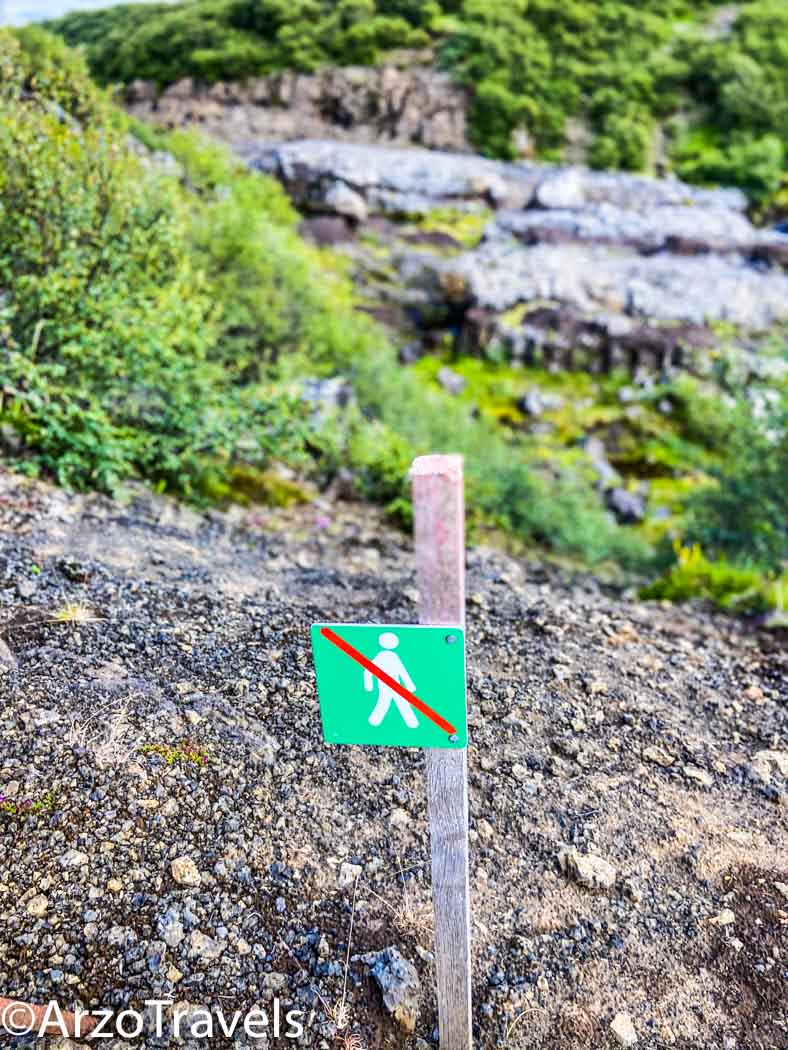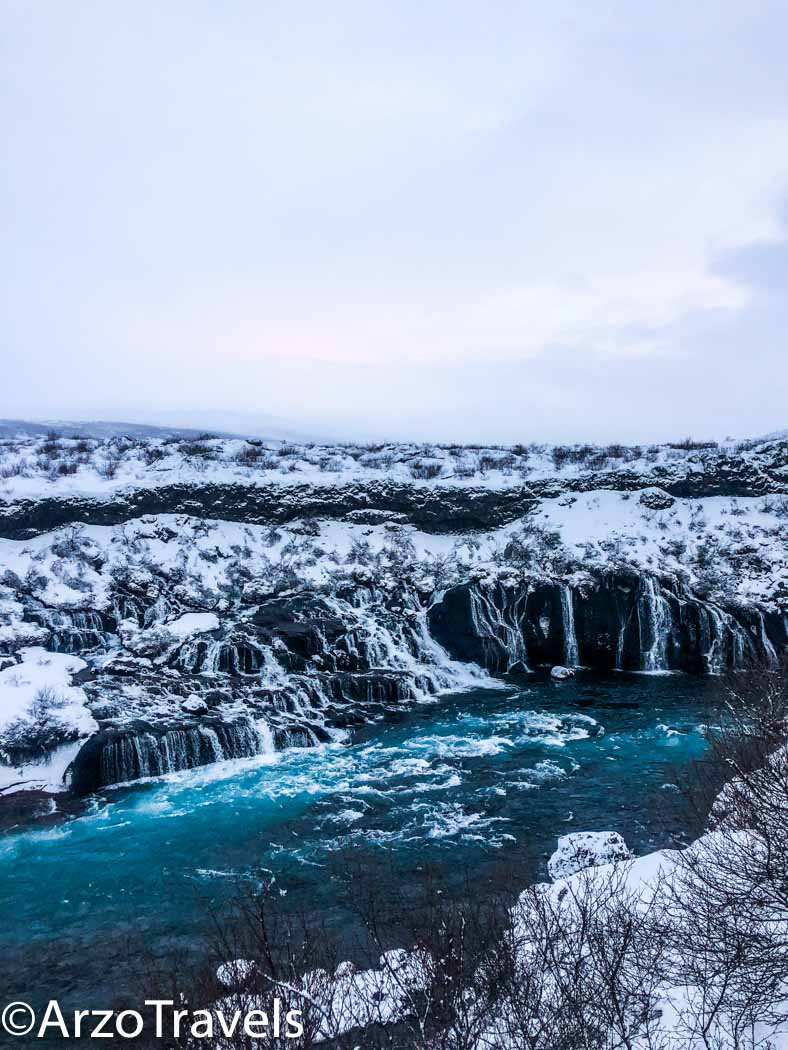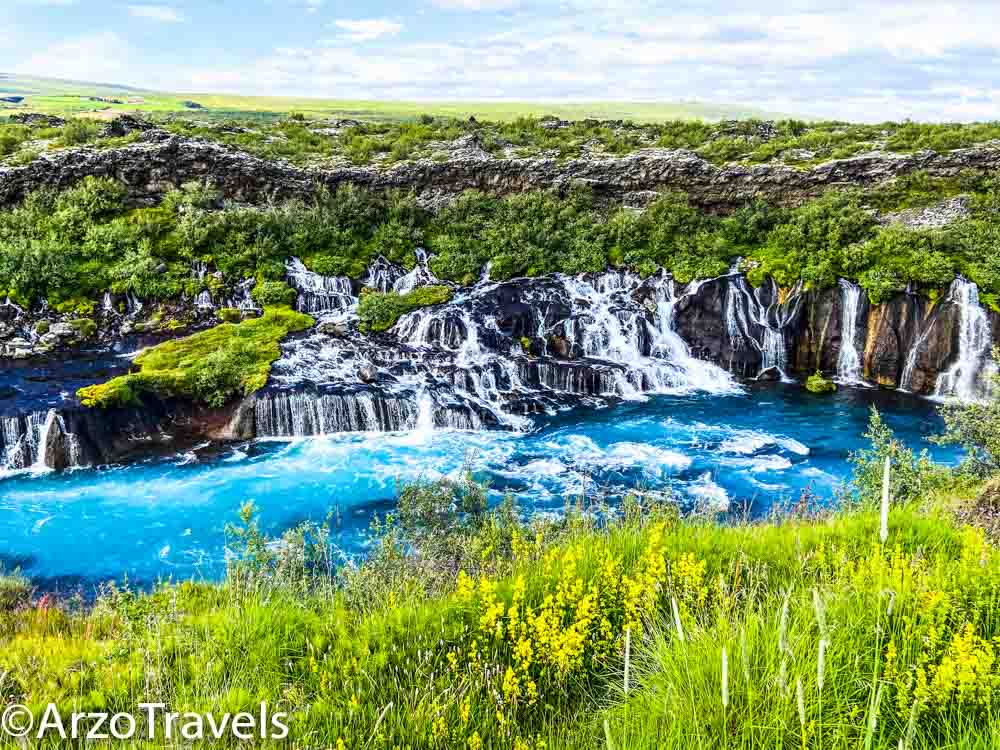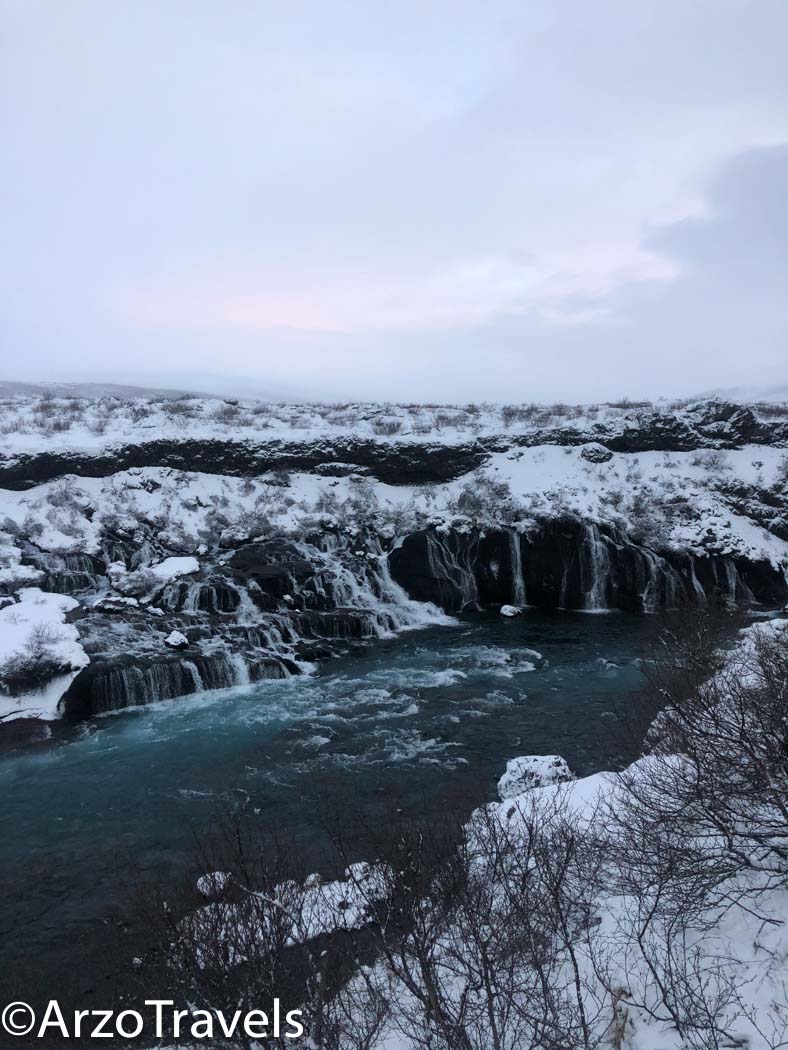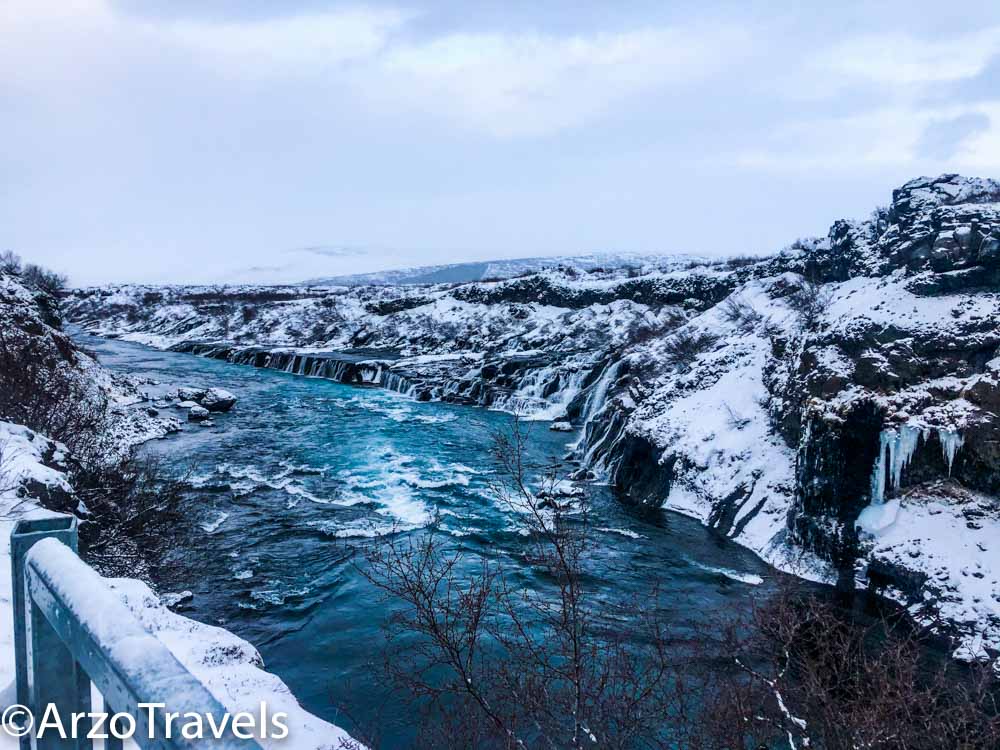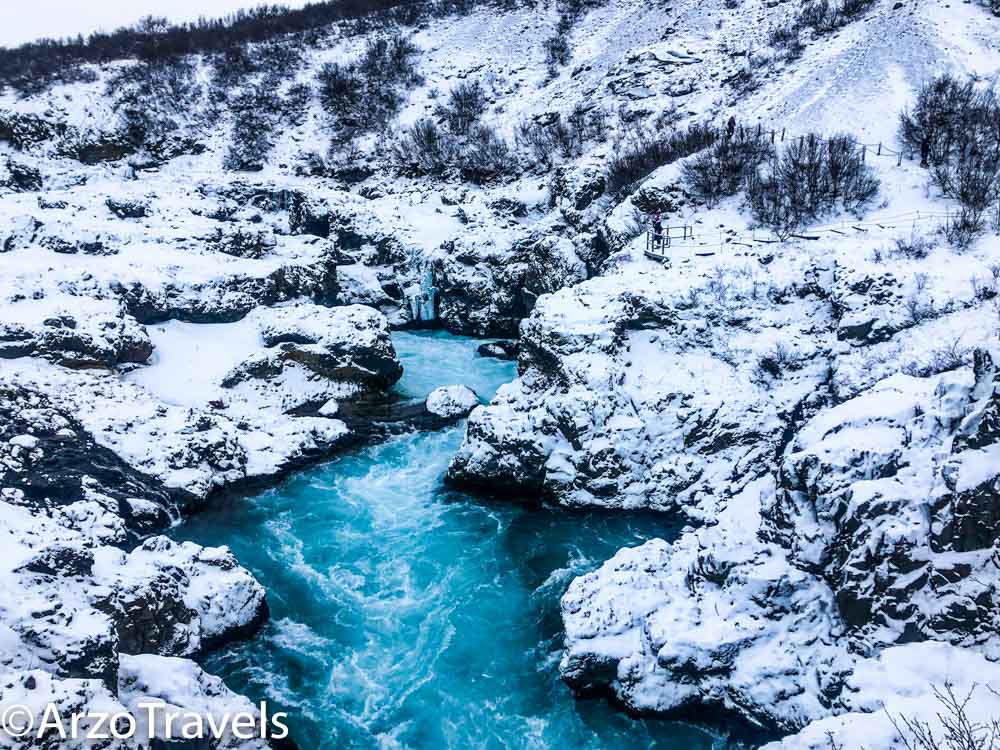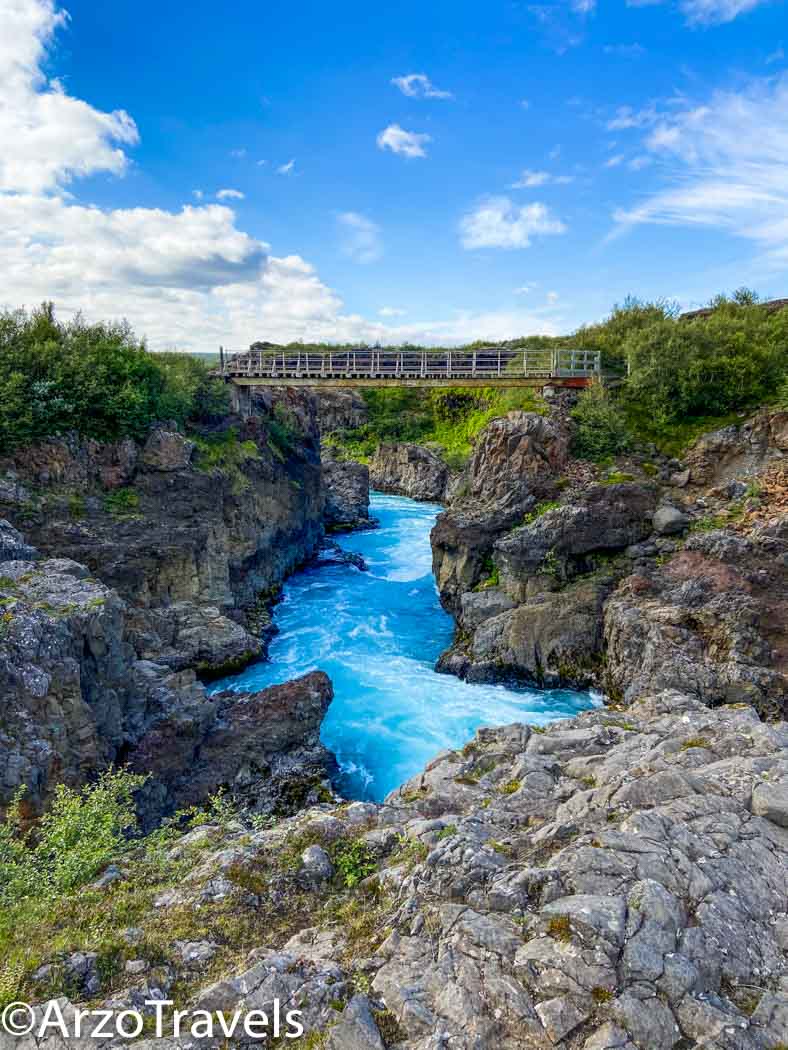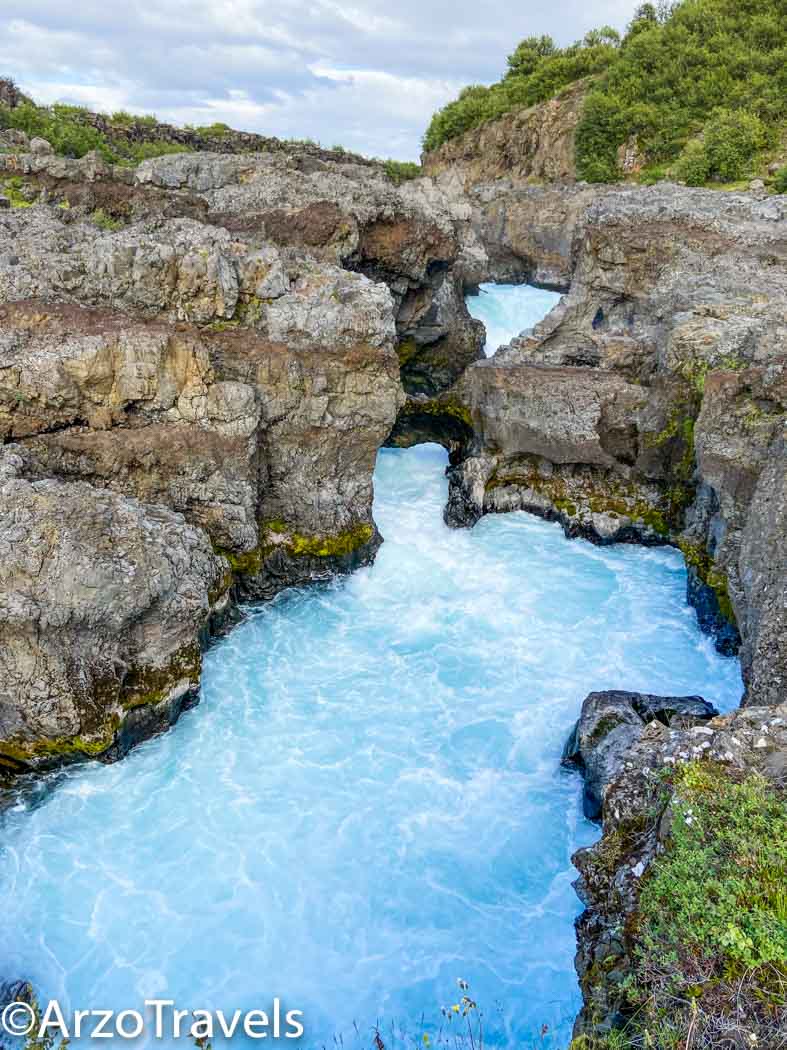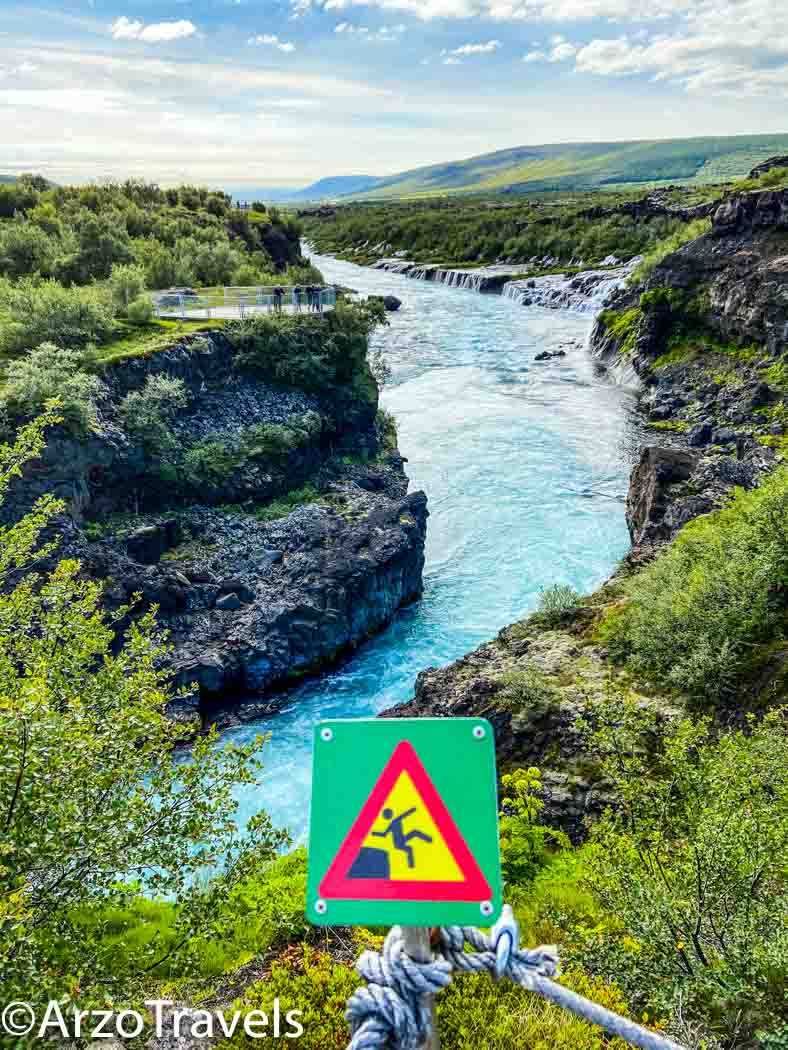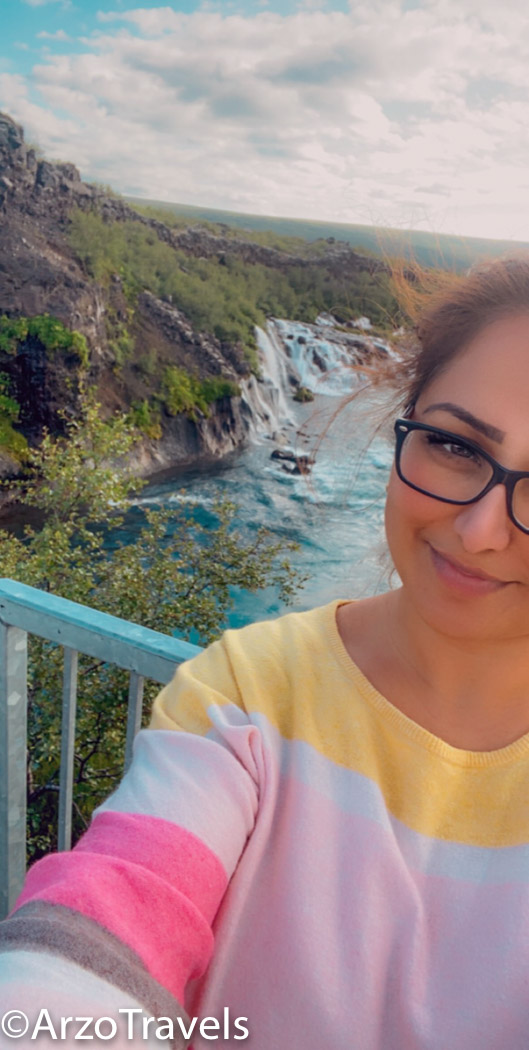How to See Hraunfossar Waterfalls and Barnafoss Watterfalls
Let’s talk about two beautiful waterfalls in Iceland that are often overlooked in a country full of waterfalls – Hraunfossar Waterfalls and Barnafoss Waterfalls. There are apparently around 10,000 waterfalls in Iceland. So, how can a waterfall stand out? Dettifoss is the most powerful waterfall in Iceland (in terms of volume of water). Seljalandsfoss is famous as you can walk behind the waterfall. The highest waterfall in Iceland is Glymur. Brúarfoss has the “most beautiful watercolor”, and then there is this hidden waterfall.
So, why are Barnafoss and Hraunfossar Waterfalls special? Why should someone visit Barnafoss and Hraunfossar Waterfalls? Hraunfossar Waterfalls is a relatively small yet overly beautiful waterfall that can stand up to the gigantic competition. It looks absolutely pretty and is easily accessible at any time of the year. And Barnafoss…well, it is just next to Hraunfossar, so why not visit it, too?
TRAVEL TIPS FOR HRAUNFOSSAR AND BARNAFOSS WATERFALLS
Here are some tips: why visit Hraunfossar and Barnafoss, how to get there, what to do and see near the waterfalls, and a few more tips for your visit.
Disclaimer: This post might contain affiliate links. This means I might earn a small commission when you buy a product (at no extra cost to you) after clicking on my link. More about it here.
HOW TO GET TO BARNAFOSS / HRAUNFOSSAR
The waterfalls are located in Borgarfjörður in the West of Iceland about 120km away from Reykjavík.
There is a parking spot and from there the waterfalls are easy to access. Parking is free but limited, so during the high season, get here early or later in the day. Once you park, you just have to walk a few meters, and you will see the waterfalls already. If you road trip Iceland, it is very easy to visit yourself. If you do guided day tours from Reykjavik, check out this tour (I did this, or a similar, tour that included a trip to Hraunfossar and the lava cave).
THINGS TO KNOW BEFORE VISITING
- There is no hiking required. The walking path around the waterfalls are well marked.
- Please stay on the path and do not leave it.
- As everywhere, but especially in nature, do not leave any trash behind and take everything with you.
- In the summer months, there is a cafe at the waterfalls.
- Wear appropriate footwear in winter (crampons are my tip).
BEST TIME TO VISIT HRAUNFOSSAR WATERFALLS
WINTER: I visited in early January and experienced beautiful scenery – the watercolor looked amazing and so did the waterfalls themselves. I had booked a guided tour (definitely did not want to drive in winter in Iceland) and chose a tour that focused on the lesser-visited areas like these waterfalls. Our bus was the only bus around – and it was cold. Really cold. But it was worth it.
Most people in my group just looked at the Hraunfossar and quickly went back to the bus. I was probably the only one who made it to Barnafoss. During the winter months, you cannot do much around the area. It was worth it. I loved the winter wonderland at Hraunfossar in January.
SUMMER: The second time I visited was in July. And it looked gorgeous. Meadows surround the waterfalls with many flowers, and the contrast of green, yellow flowers, and blue waterfalls looked pretty.
It gets busier in the summer months, but it was still not overly crowded. You cannot do a lot of hikes around the waterfalls – not even in summer. Some paths are closed to protect nature and to protect ourselves. However, given its beauty, I think also summer is the perfect time to visit the waterfalls.
SPRING/FALL: Normally, fall is a good time to spend outdoors. But as you might know, there are hardly any trees in Iceland (you can count the trees you will see!) and so, the fall foliage is not as impressive as in other countries. I have not visited in fall myself but looked up images from fall and spring and it looks beautiful in spring and fall, too.
However, I believe that summer and winter are the best times to visit. But it is a good attraction in Iceland to visit all year round. If you are wondering about the best time to visit Iceland in general, check out my comparison guide: Winter or summer trip to Iceland.
HRAUNFOSSAR WATERFALLS
Actually, Hraunfossar consists of numerous springs that emerge under the edge of the lava field Hallmundarhraun. Hallmundarhraun, however, consists of pillow lava and was probably created in 800 AD.
The water is from Langjökull Glacier, the second-largest glacier in Iceland. You might know that the famous Gullfoss waterfall is also fed from the same glacier. The water running between the lava layers created the Hraunfossar Waterfalls (hraun= lava and fossar= waterfalls), which are almost 1000 meters wide. THIS (and the watercolor) make Hraunfoosar a special Icelandic waterfall. From there, the water flows into the Hvita River.
It really depends on when you visit Hraunfossar – the watercolor can change. After rainy days, it does not look as clear and beautiful as in the pictures here. I visited in summer and winter, and both times, the watercolor was incredible.
From there, head to Barnafoss.
BARNAFOSS WATERFALLS
Above Hraunfossar, there is another waterfall – Barnafoss. It is just a 2-minute walk max. Despite its proximity to Hraunfossar, it is completely different. Hraunfossar is an elegant, lovely waterfall, while Barnafoss is a wild, fast and powerful waterfall. Its average flow rate is 80m3/s, but there were times it has reached 500m3/sec (then the area gets flooded).
Here is where the channel of the Hvita river narrows – the river carved out stone bridges and arches with its power. It is best known for its dark history in folklore – and its name derives from it (Children’s Fall). There are several versions, so I stick with the one I read on a sign at the waterfall.
On Christmas Day, the parents of several children left home for church one morning. Two kids were to stay home. But the children decided to follow their parents, but they took a shortcut to the church via a stone bridge that arched over the nearby rapid waterfall. And to make it short: They fell into the water and died! Apparently, the parents were devastated. The grieving mom then had the stone bridge destroyed to prevent further death.
So, there are different story versions, but while many myths and legends often are very…adventurous to say the least, this story might even be true.
These days, the natural bridge is gone and there is a pedestrian bridge across the river from the year 1891, which was renovated in the late 20th century.
IS HRAUNFOSSAR AND BARNAFOSS WATERFALLS WORTH VISITING?
I visited the waterfalls for the first time in winter – and it was one of the highlights of my winter trip. I revisited it in the summer and was worried to be disappointed. But I was not. Hraunfossar and Barnafoss look beautiful in summer and winter. Given its accessibility and other attractions close by, like Husafell or Víðgelmir Cave, and Deildartunguhver Hot Spring, it makes a perfect day trip from Reykjavik or stops for an Iceland road trip.
Check out my guide for the best day trips from Reykjavik in winter.

